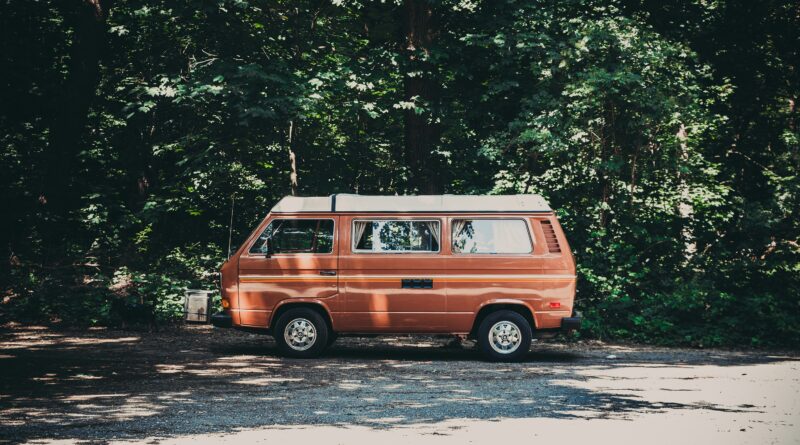Van Life: What Features Should You Visit Before in a Starter Van?
Van life is an alternative to RVing.
Compared to living in an RV (part-time or full-time), converted motorhomes are cheaper. They are also readily available for those with a little knowledge (or savings) and are easy to transport to remote locations.
In other words, they may be small, but they can also be more powerful – especially when it comes to heavy trips.
That being said, there are many business opportunities for those who choose a van over an RV. The biggest is space.
Compared to a regular van, RVs come with parts and accessories that are ready to rumble. These offer a more comfortable approach – while being more accessible for those who want to look.
For those weighing the benefits of van living, one question that comes to mind is what types of things are most important to beginners? If you’re exploring the idea of a ‘starter van’, as they’re called, there are a few basic features you need to get started right away.
But what is it? Let’s check.
If you want to dig deeper into my sources for this article, you can check them out here:
Finding the right van to start with
Let’s start with the most important point: the van itself.
Often, the decision to start with a particular model depends on whether you will be living in the van full-time or part-time.
If you are going full time, you should look for a bigger van. That added space makes it possible to convert your plumbing and electrical systems into more sophisticated configurations. I’m talking about facilities like showers and even toilets. (Yes, you can have a full shower and toilet in the van!)
If you plan to live in your van for a while, size and scope may not be part of your primary goal. Instead, you just need to focus on the basics like getting a good 4×4 and being prepared for the weather. (More on low heat.)
Here are a few solid options for starter cars:
- Mercedes Benz Sprinter Van-includes four-wheel drive
- Ford Transit
- Doge Promaster
- Chevy G Series or Chevy Express – a good budget option
Electricity
Vans usually run on shore power, solar power, alternator charging, and/or battery banks.
It doesn’t matter which system you choose to use with your starter van—you’ll probably end up switching to another power system later as you gain experience.
Just be careful what you choose when buying your starter car. Every change you make will depend on the existing electrical system.
If you want to be serious about your electrical system from the start, get a high-quality battery (AGM and lithium lead the industry today) and narrow down your charging source (solar is the most powerful option today).
Remember – if you have some knowledge, you can start checking the guides from experienced van-lifers right away. (Or you can hire them to fuel your van.)
Water
A van’s water system can be basic or more advanced – the choice is yours.
When it comes to practical water storage, most entry-level vehicles include wheel well tanks. The tanks are connected to the pumps using basic water pumps – no major technology is required for a solid van to start.
Also, it makes sense to start with a basic style and refine it over time. Knocking off that sink faucet should make way for bigger projects, like showers and even toilets.
Just remember that you also need to save your gray water. Blue water is water that flows from a well. Some areas require visitors to dispose of their waste water at designated stations. Only vans that use natural and environmentally friendly products should discharge their white water directly into public areas.
Security
Plumbing and electrical systems are very important factors that you need to focus on when it comes to pickup trucks.
That being said, I would probably spend most of my time creating a modular and functional storage system. (Or finding the right professional to do the job for me.) Remember—you’ll be using valuable space for things like water storage and emergency supplies like spare tires.
The biggest savings are about effective planning. As such, are the cabinets and shelves thoughtfully placed around the camper? Are they always closed when you drive?
Storage is your first line of defense to design a clear space that will keep your van alive. Don’t underestimate its importance.
The spirit of the spirit
Almost all campers come with ceiling vents designed to keep air flowing even when the doors are closed.
But will it be enough? Some blogs recommend looking for models that include windows that slide open or that can be opened at night. That provides more ventilation in hot areas.
However, the easiest way to keep the air moving is to install a ceiling fan. Not only can a fan prevent many sleepless nights, but it’s also nice to have when you’re cooking (or heating) food.
Insulation
Ventilation goes a long way in keeping the van cool and fresh.
But insulation is the real hero when it comes to temperature control—and humidity control, too. Insulation regulates the warm or cool air of the van, while absorbing condensation to reduce humidity.
This is especially important if your campsite includes wooden parts, as they can be badly damaged by that moisture. But outside of the humidity control area, it is also an important part for ensuring the temperature in very cold areas.
#Van #Life #Features #Visit #Starter #Van
